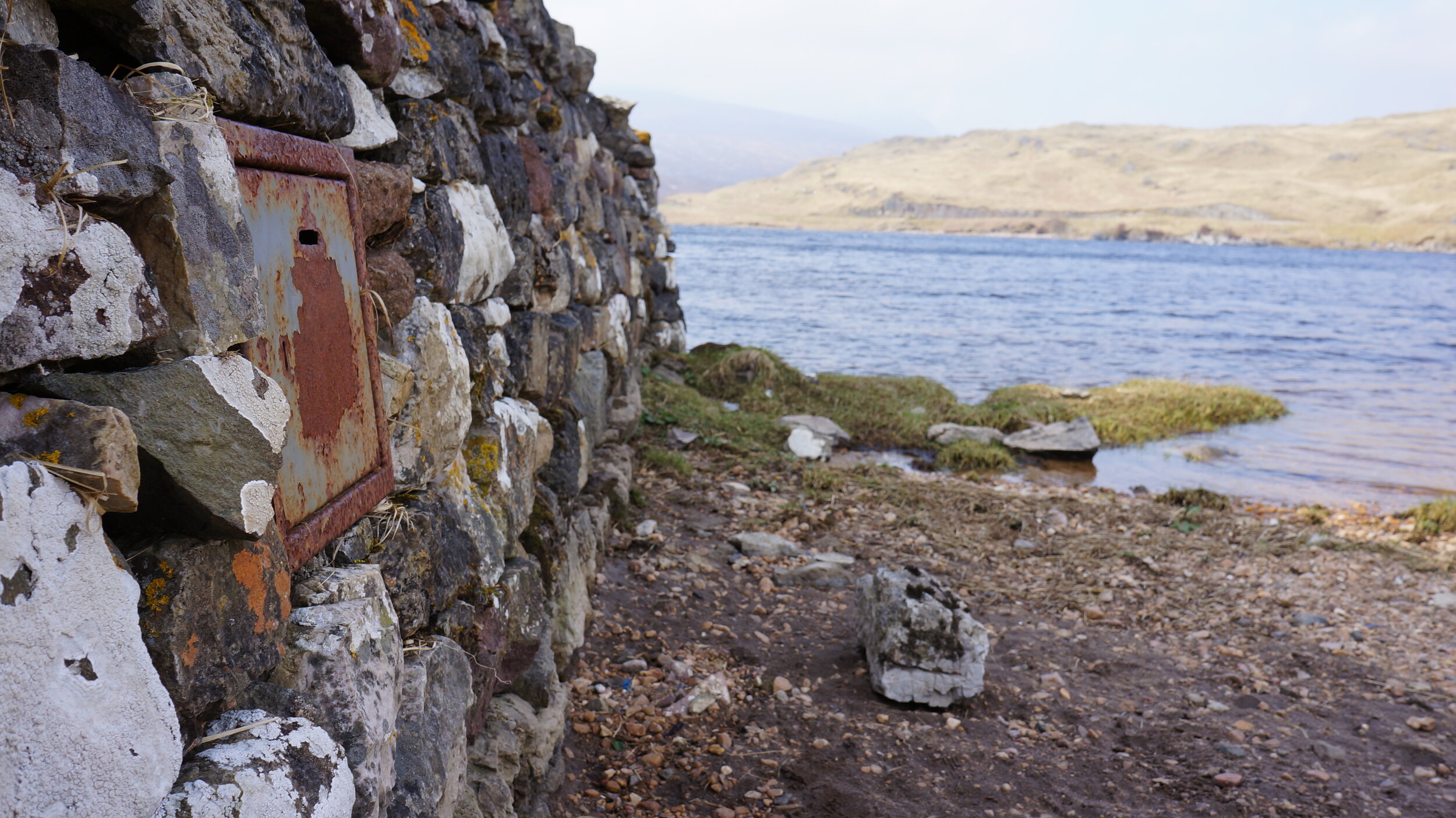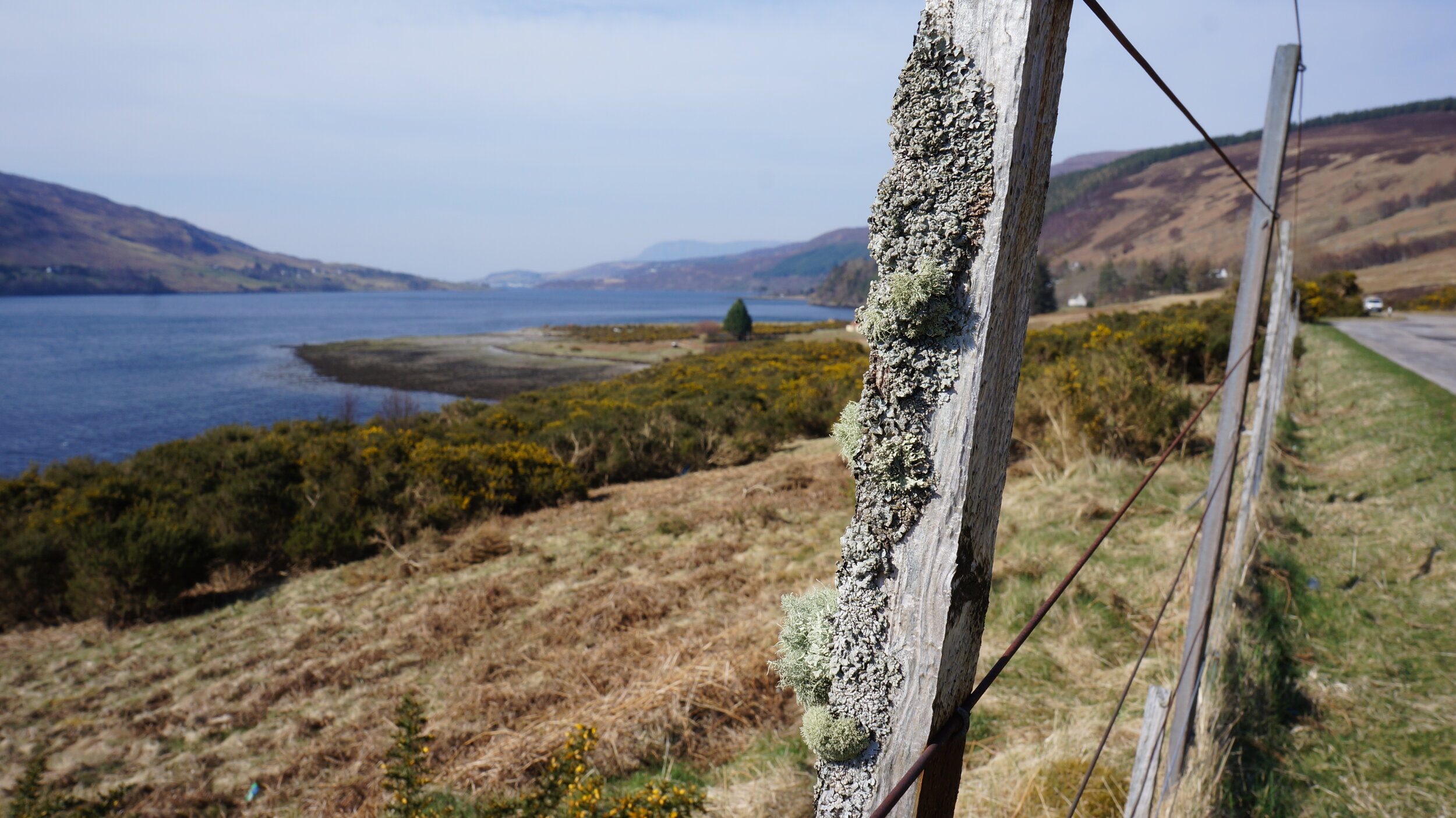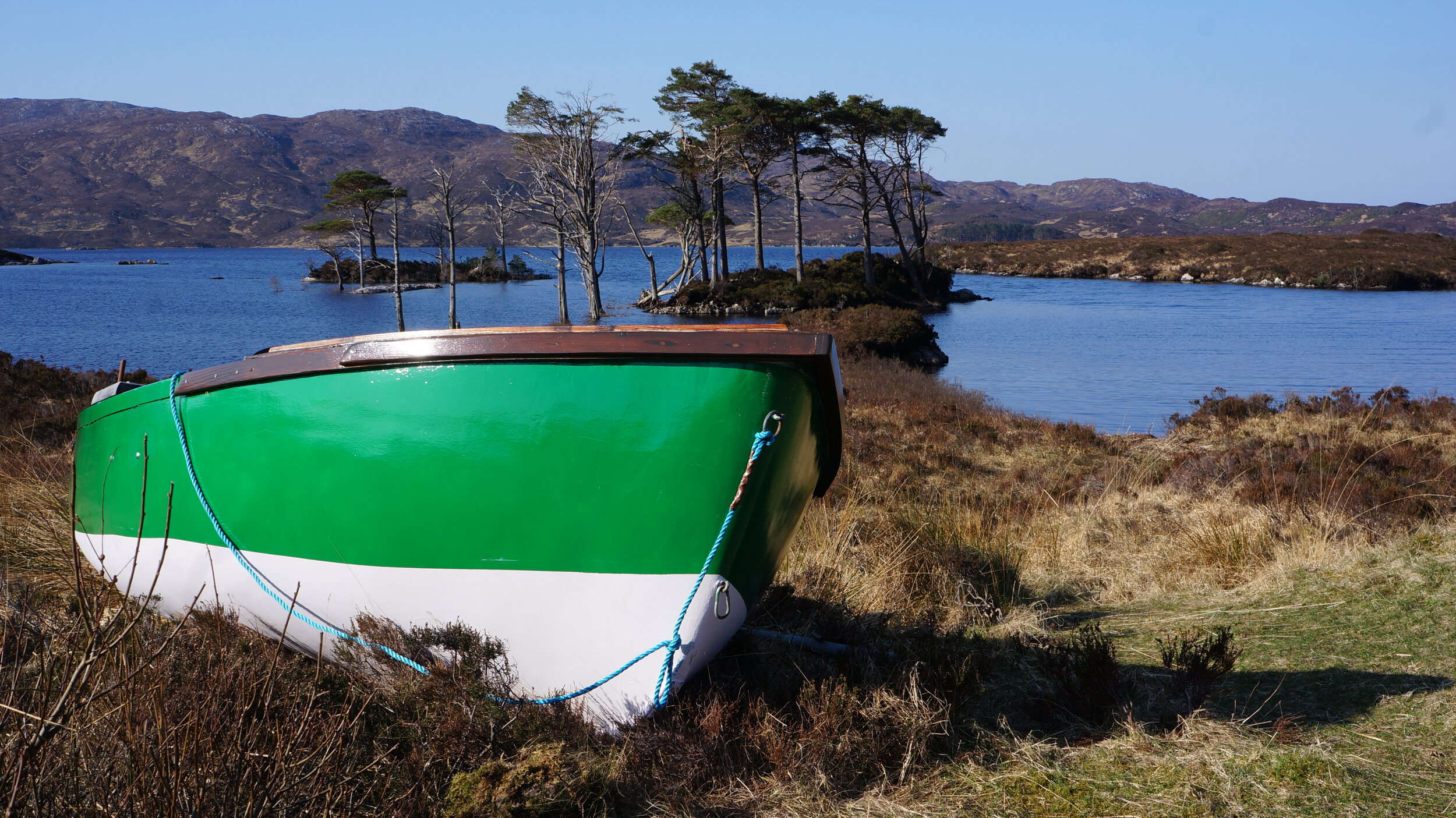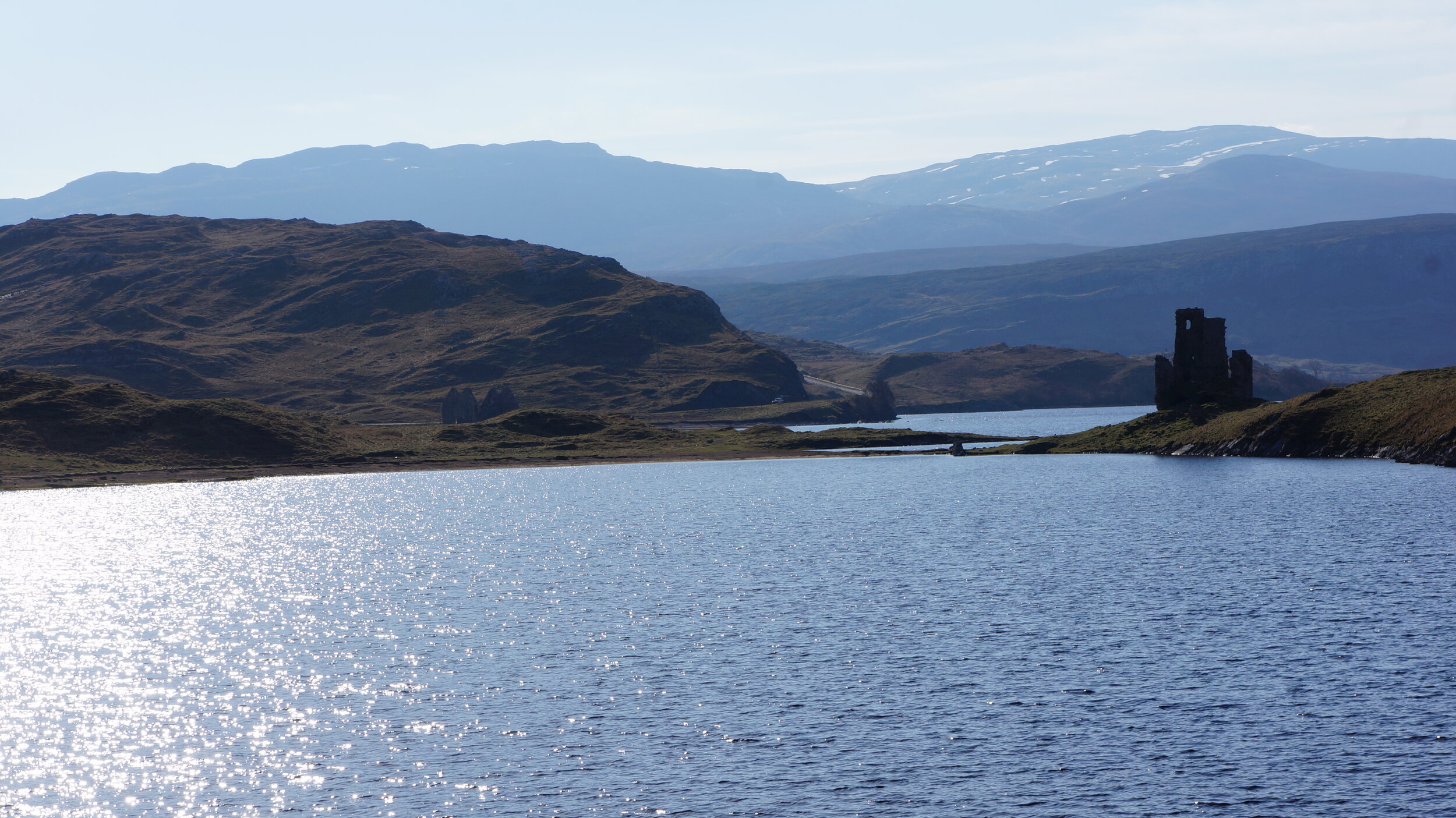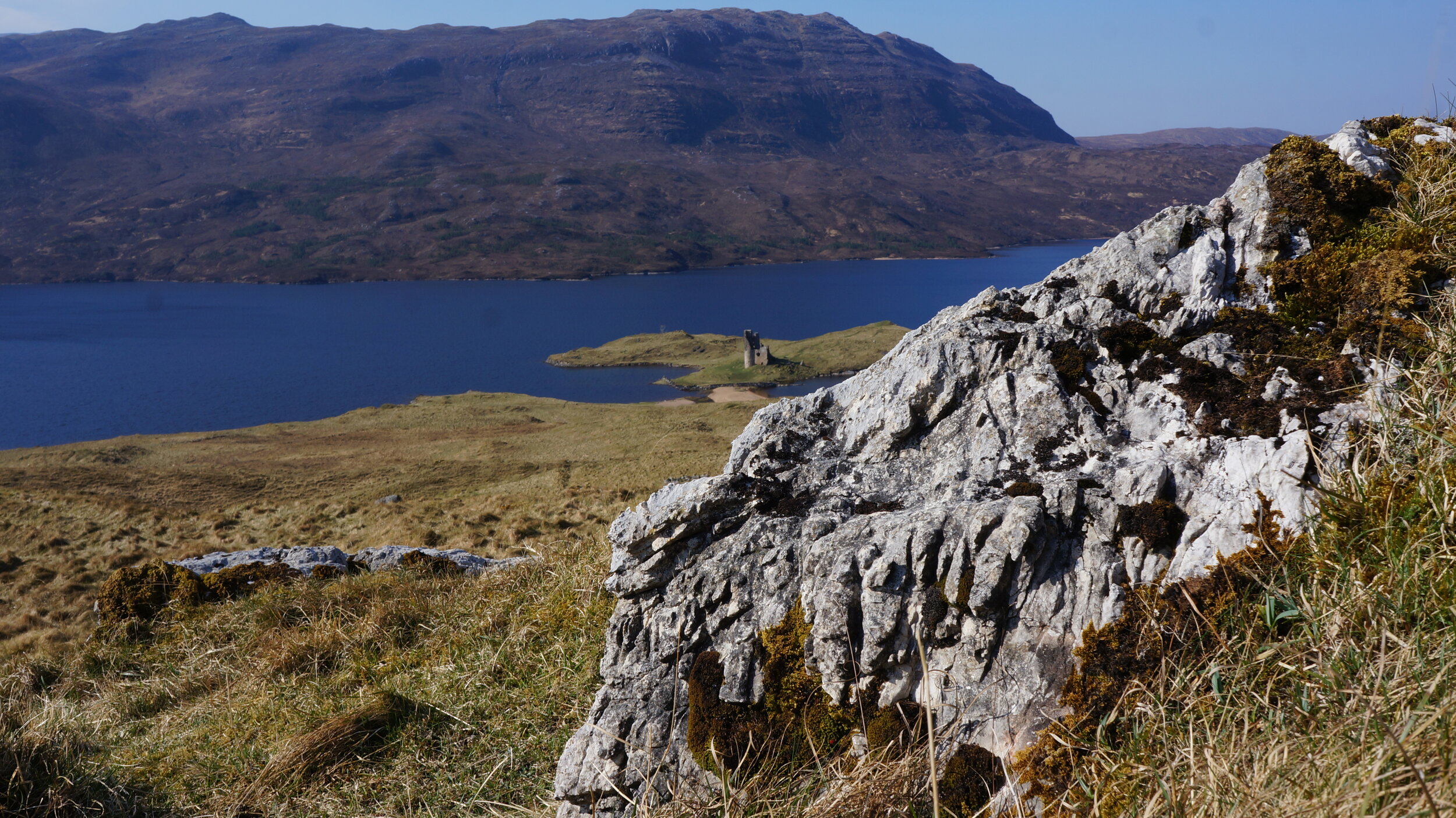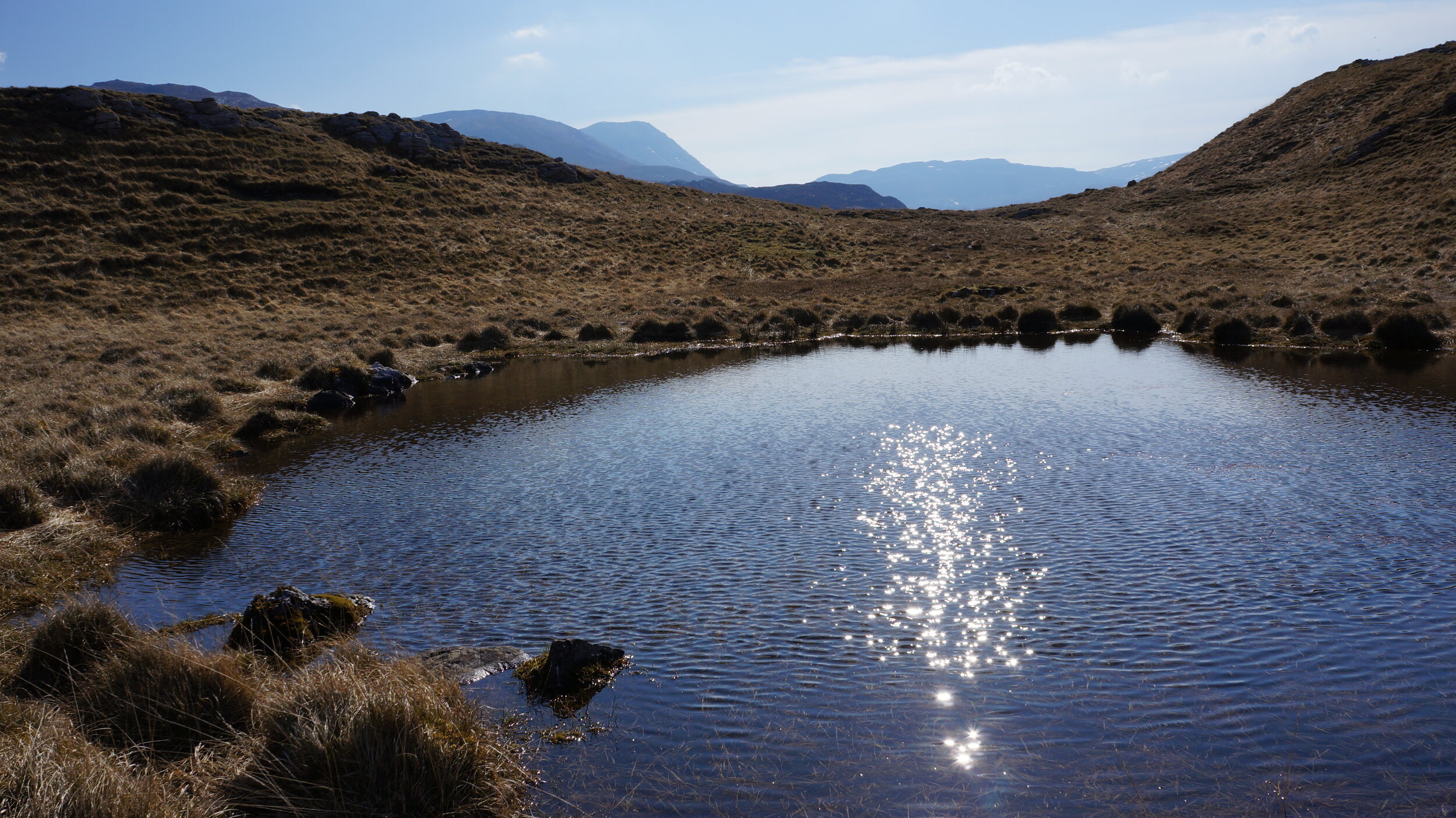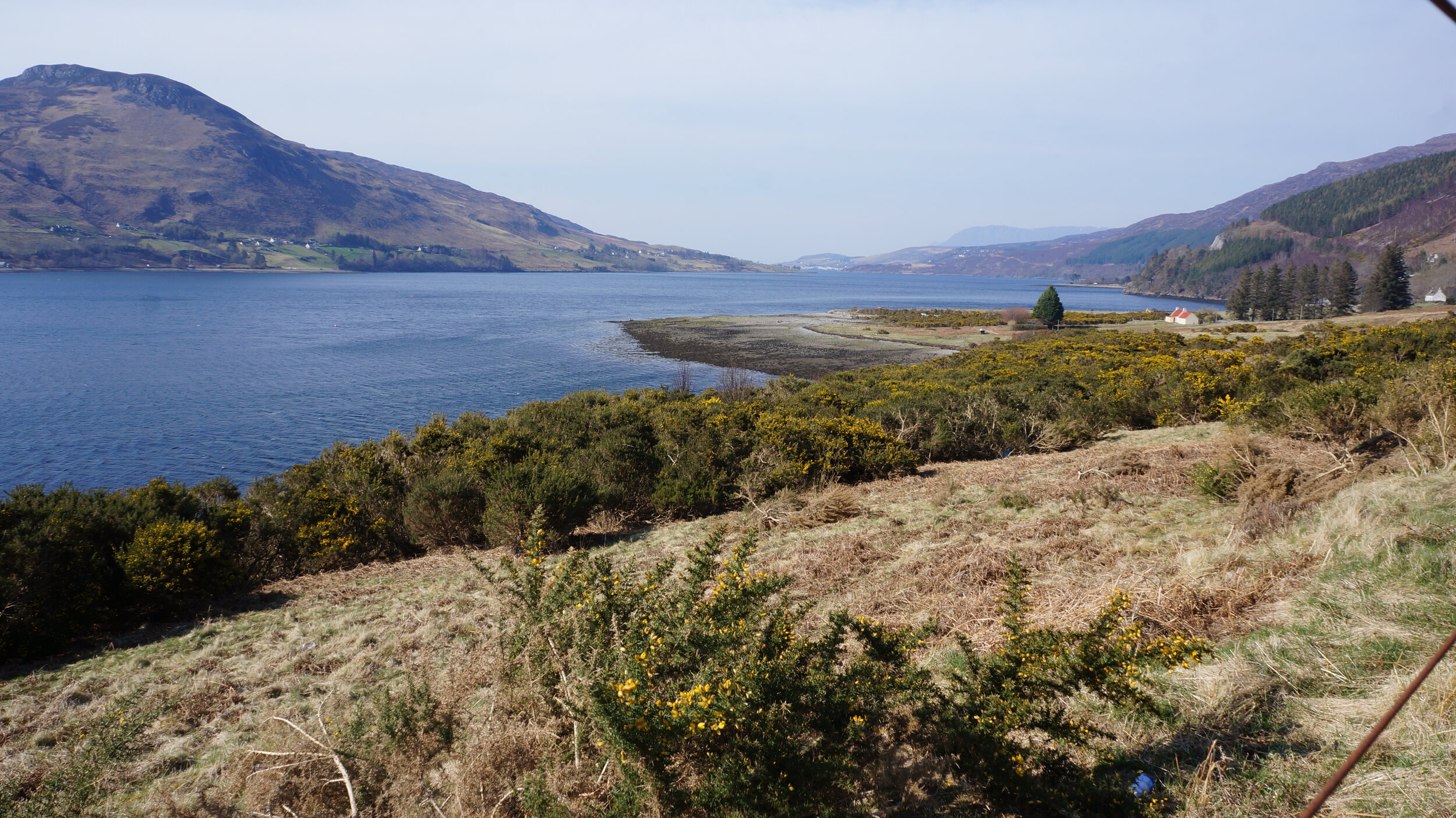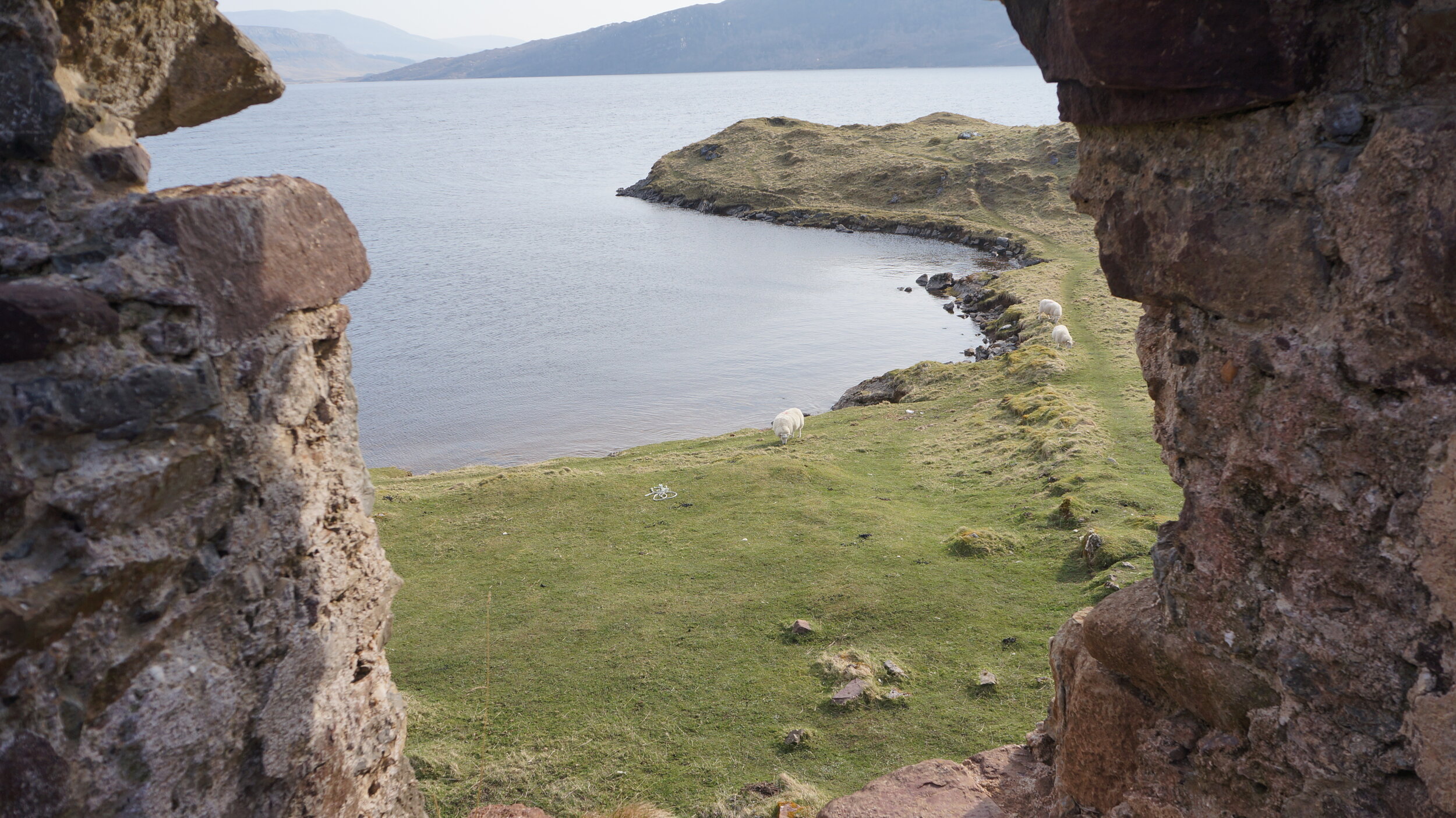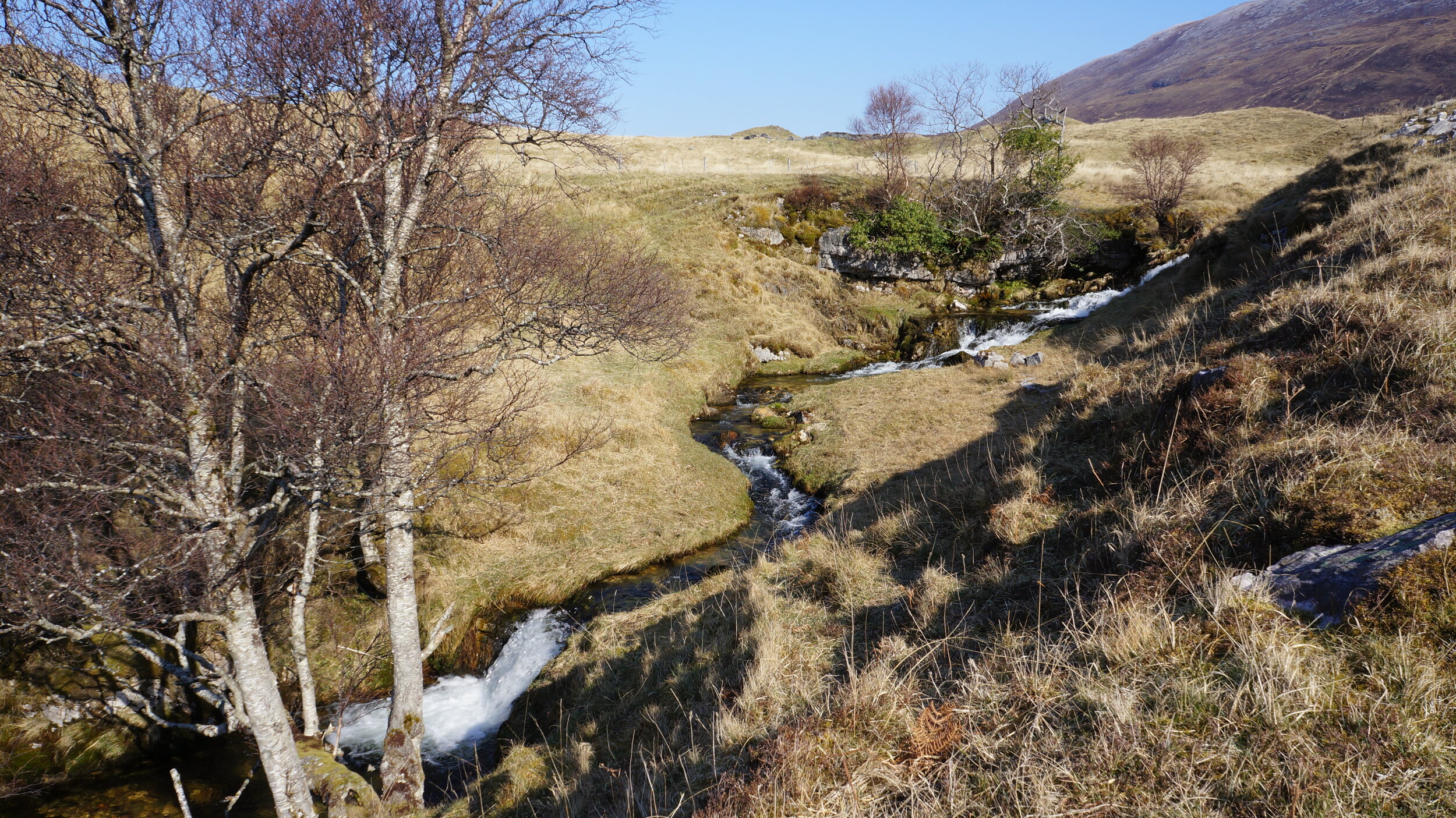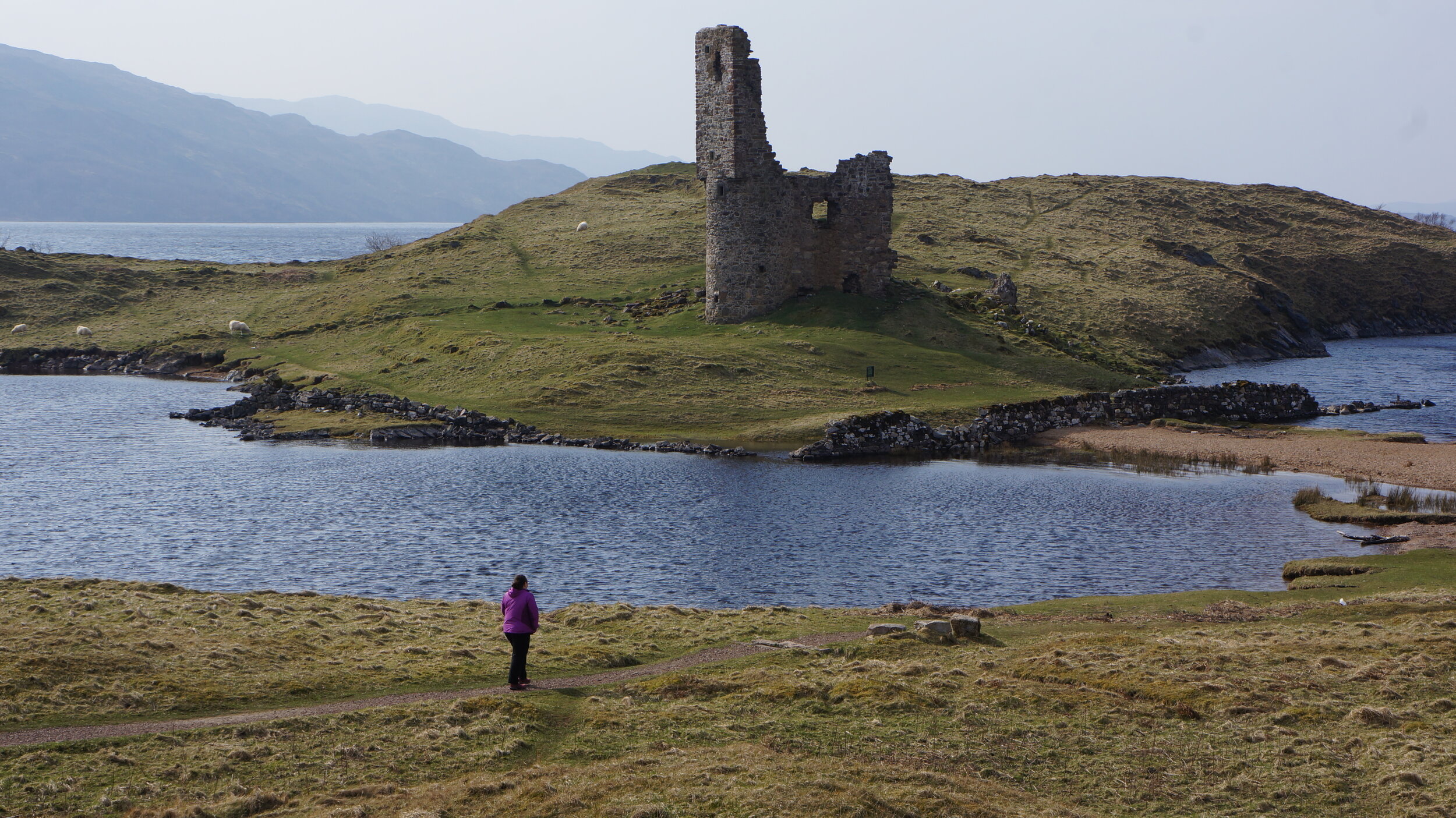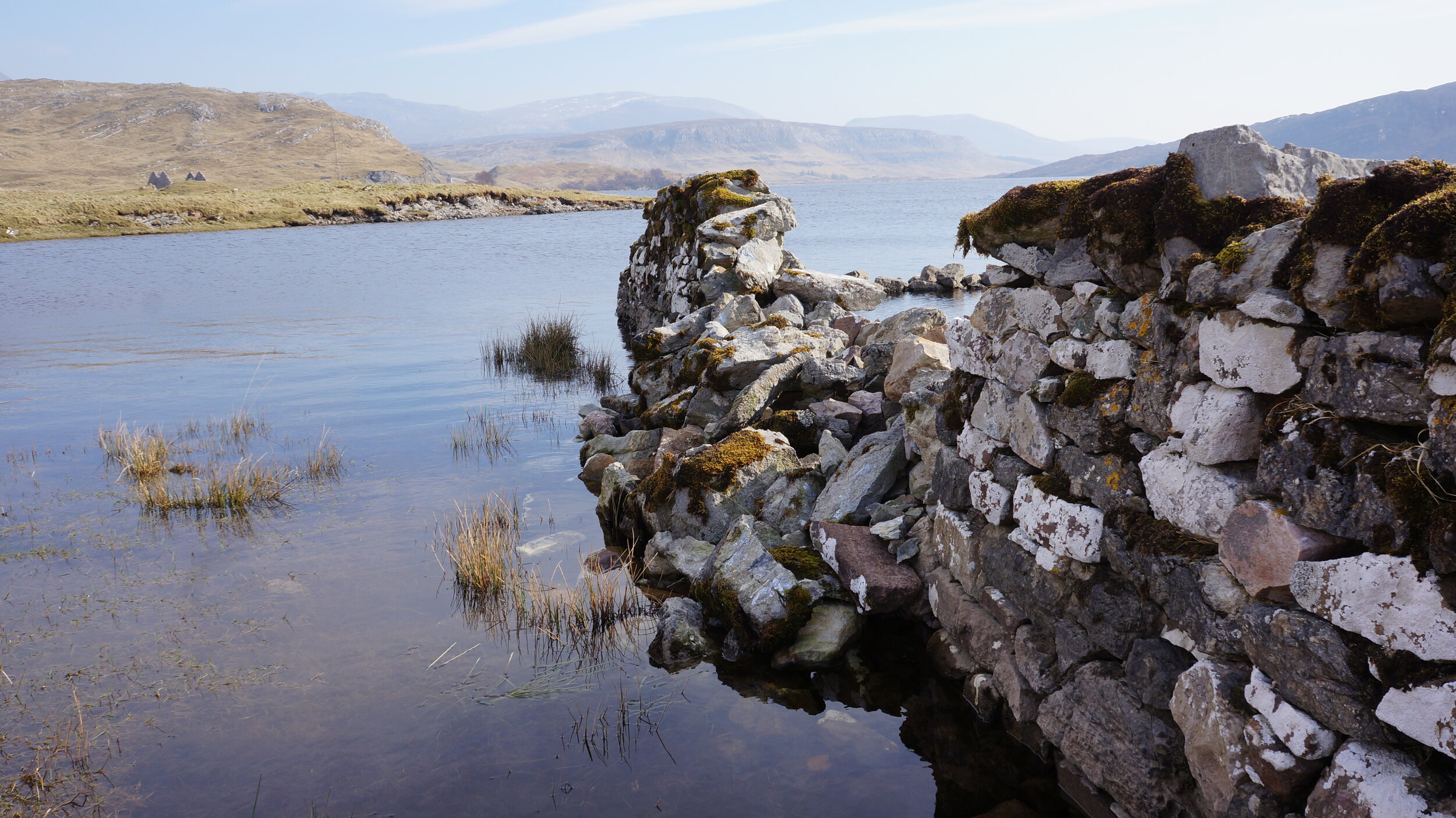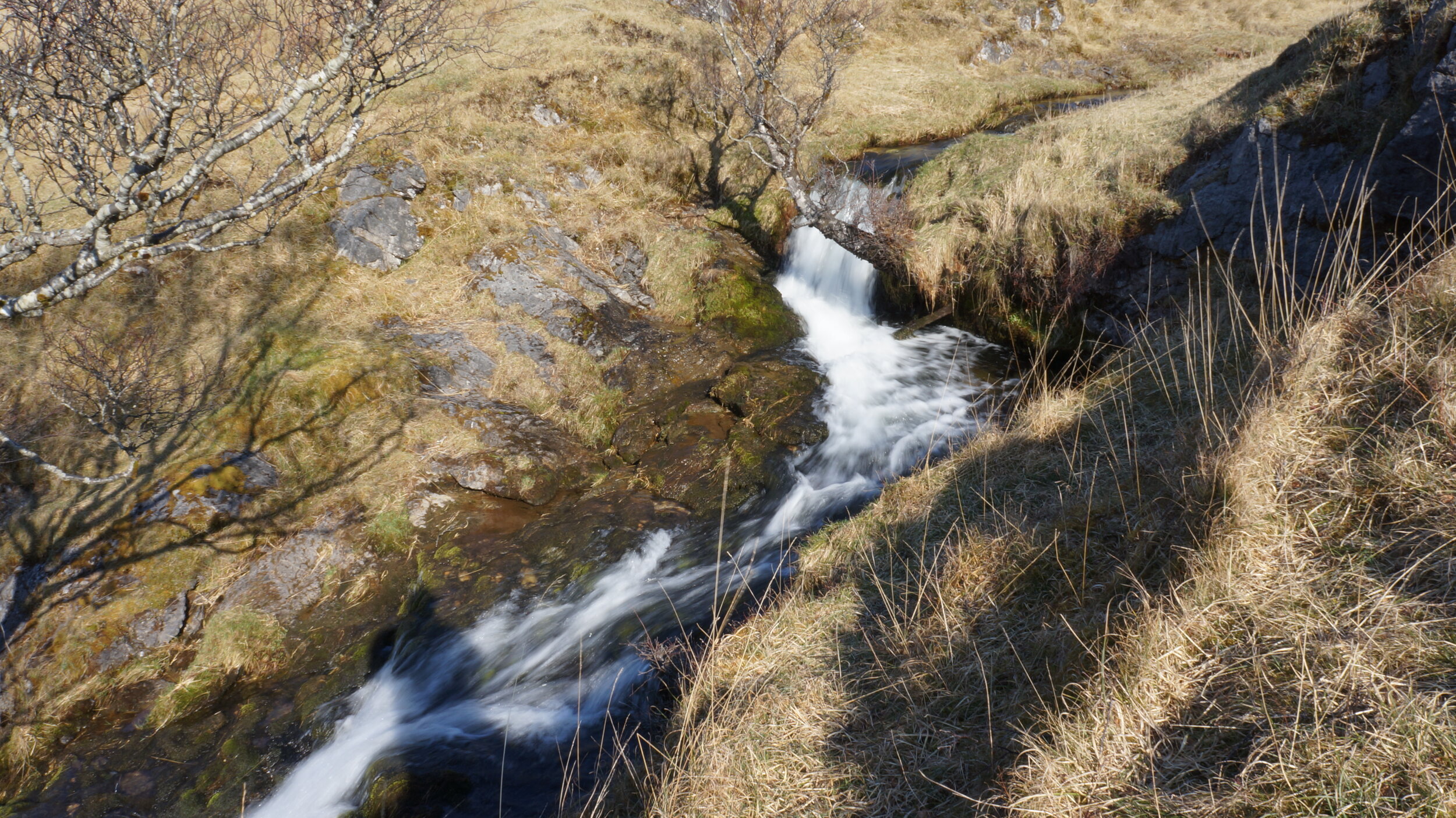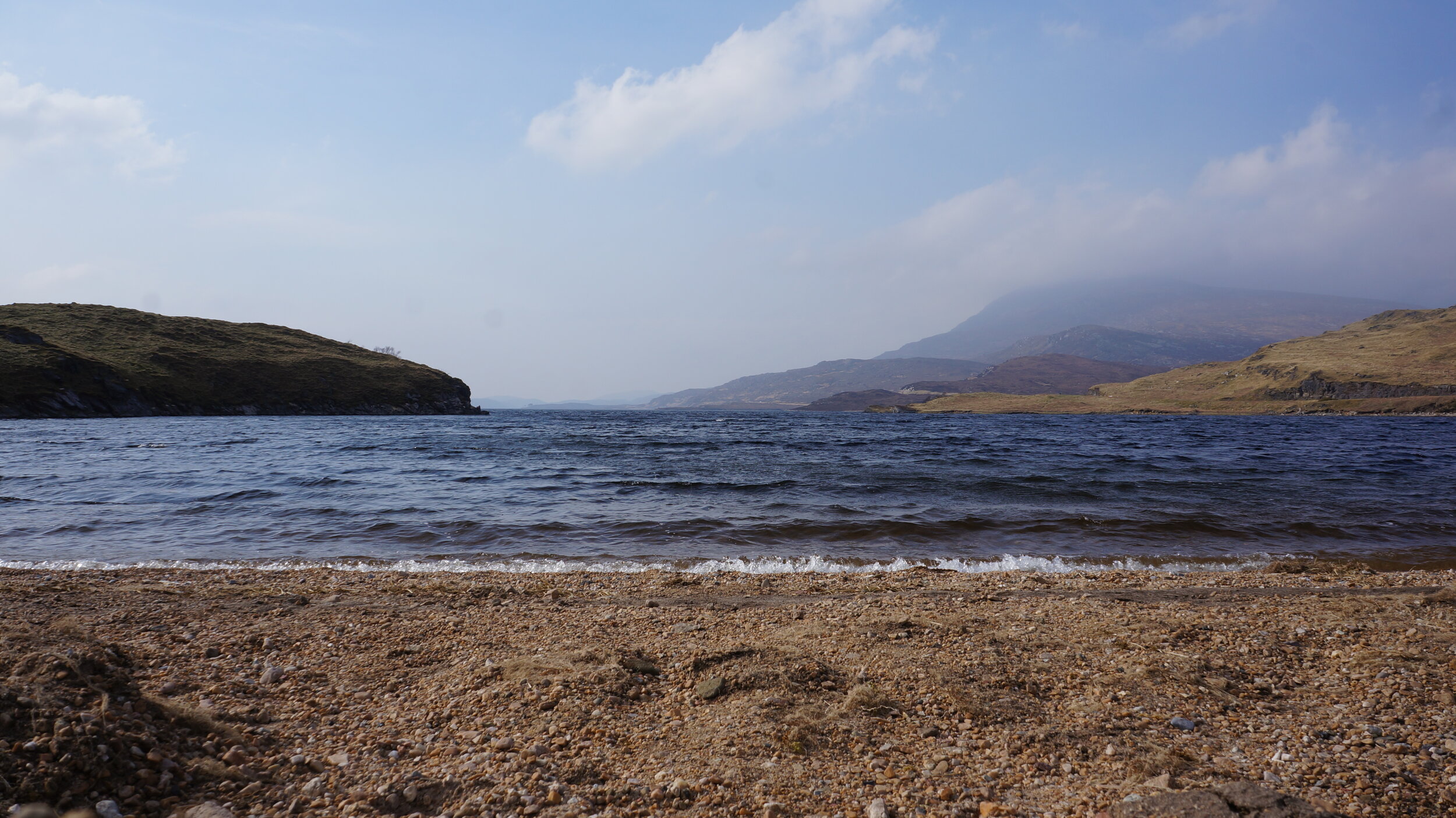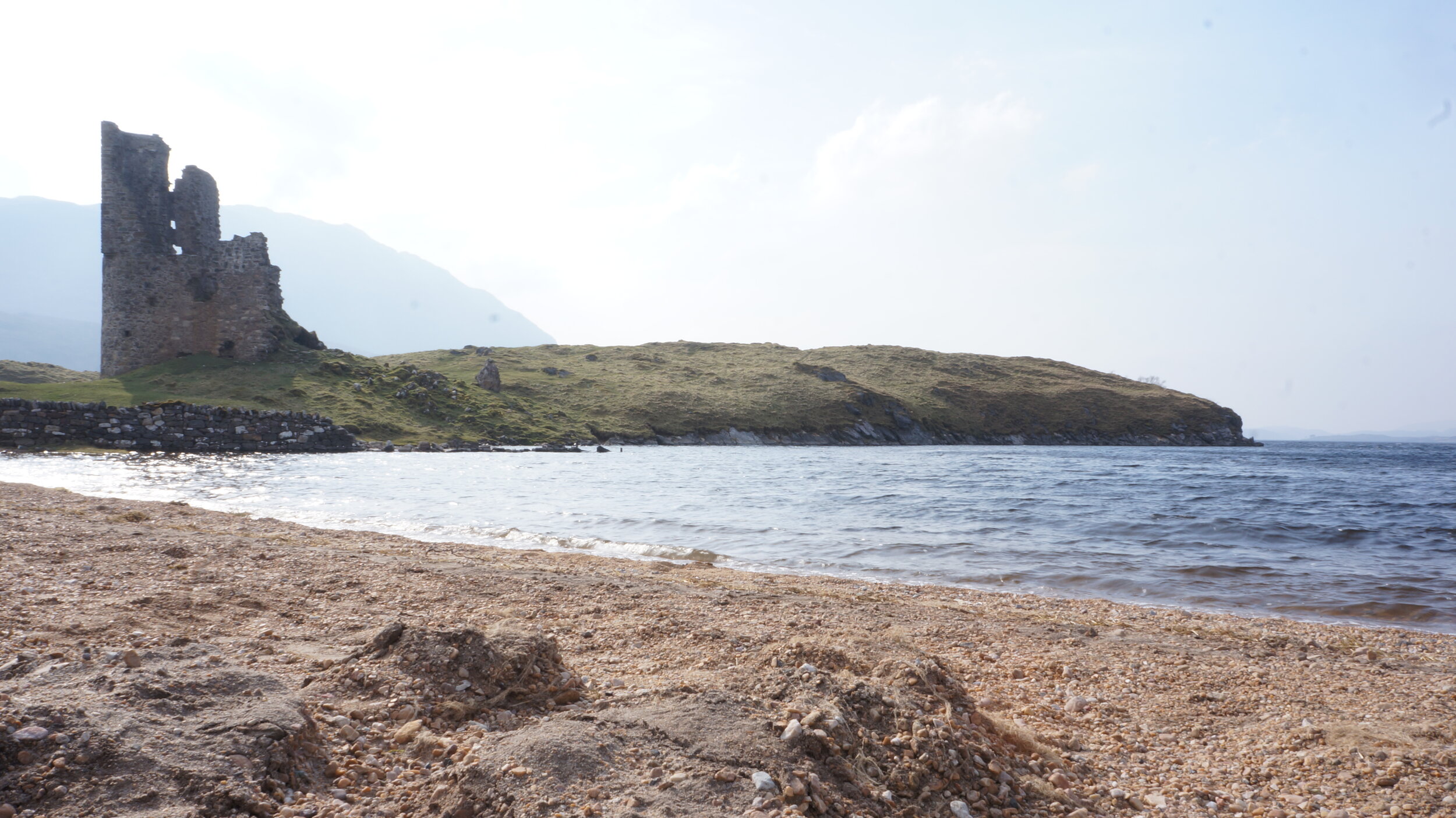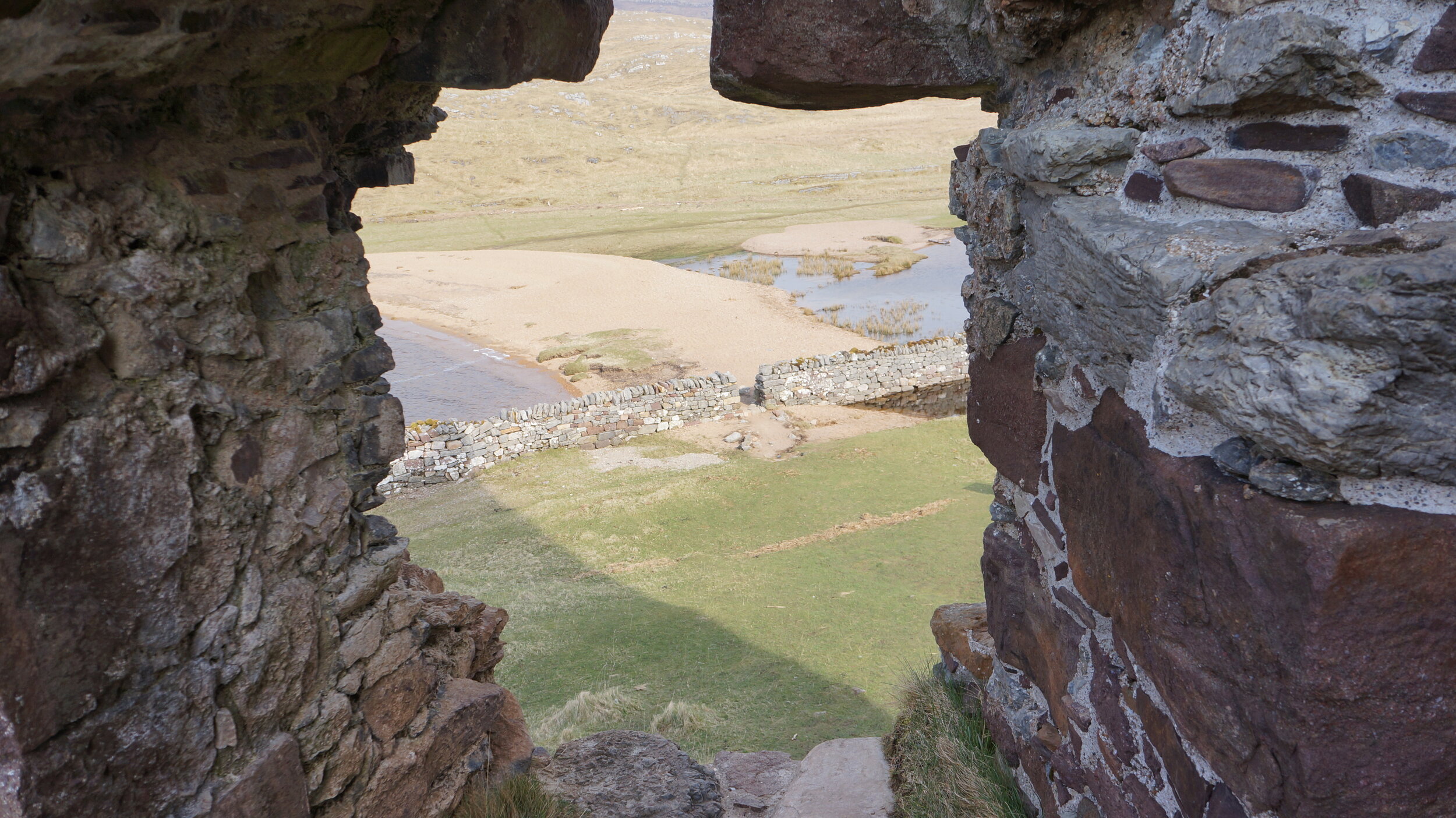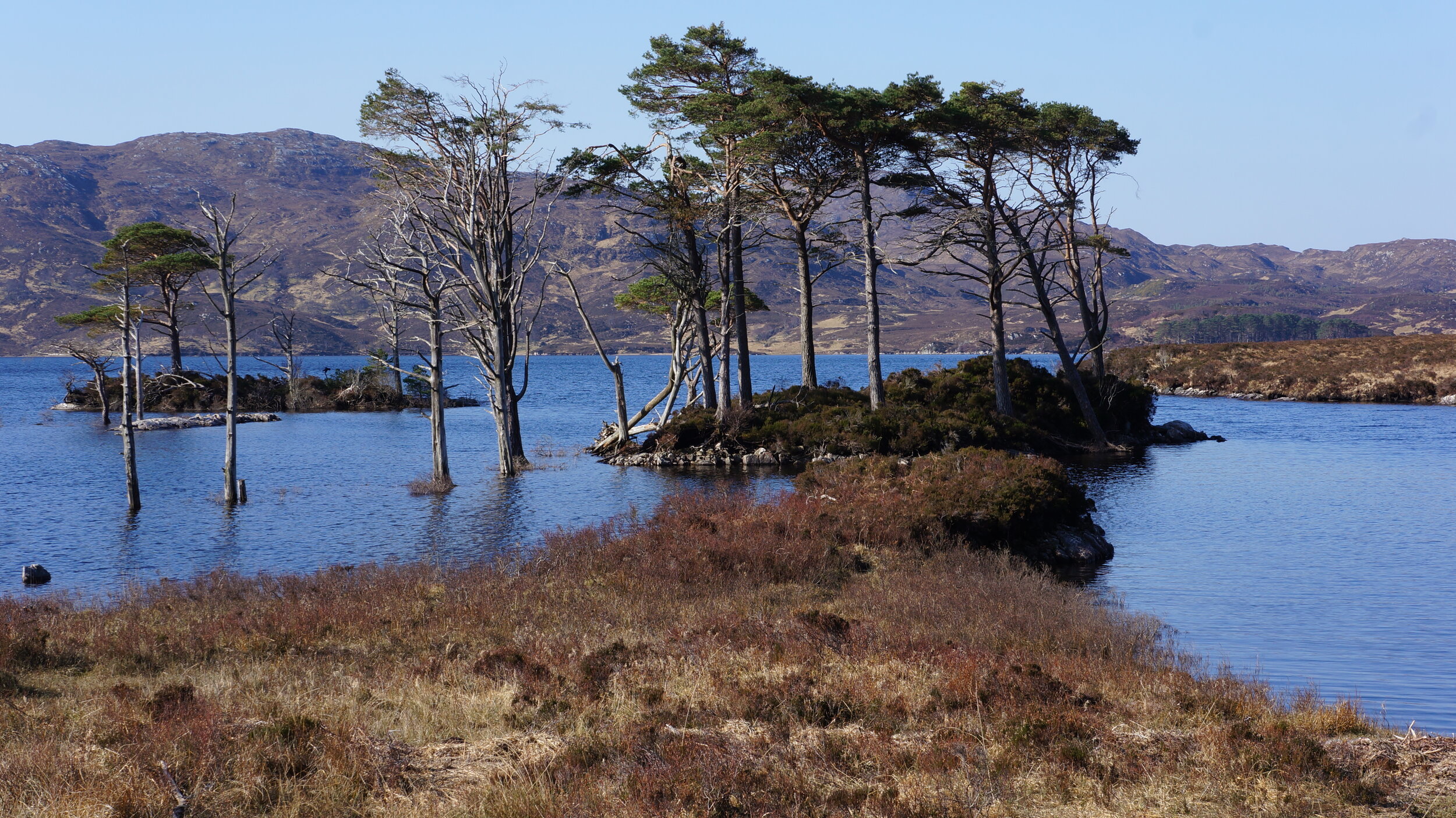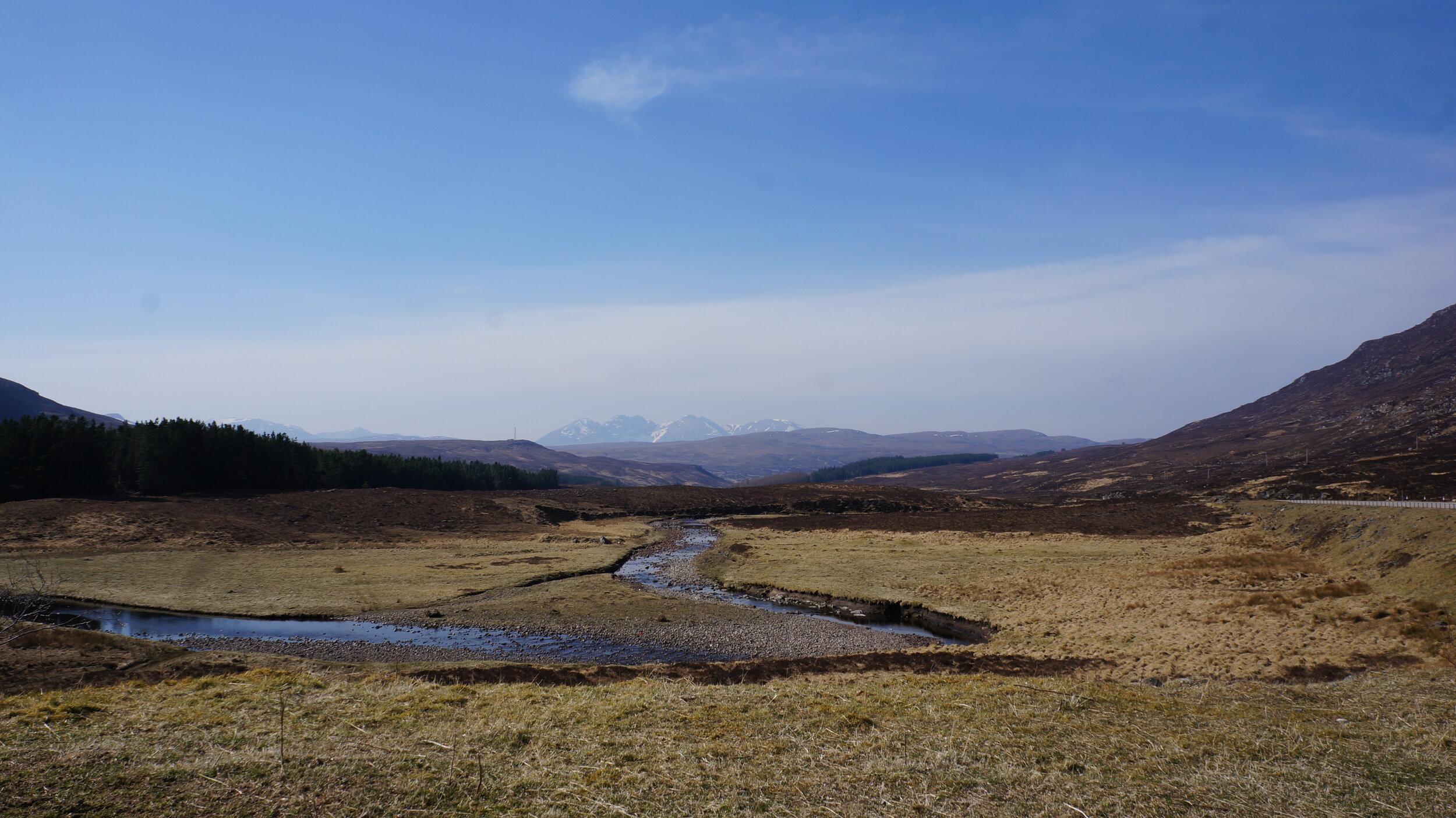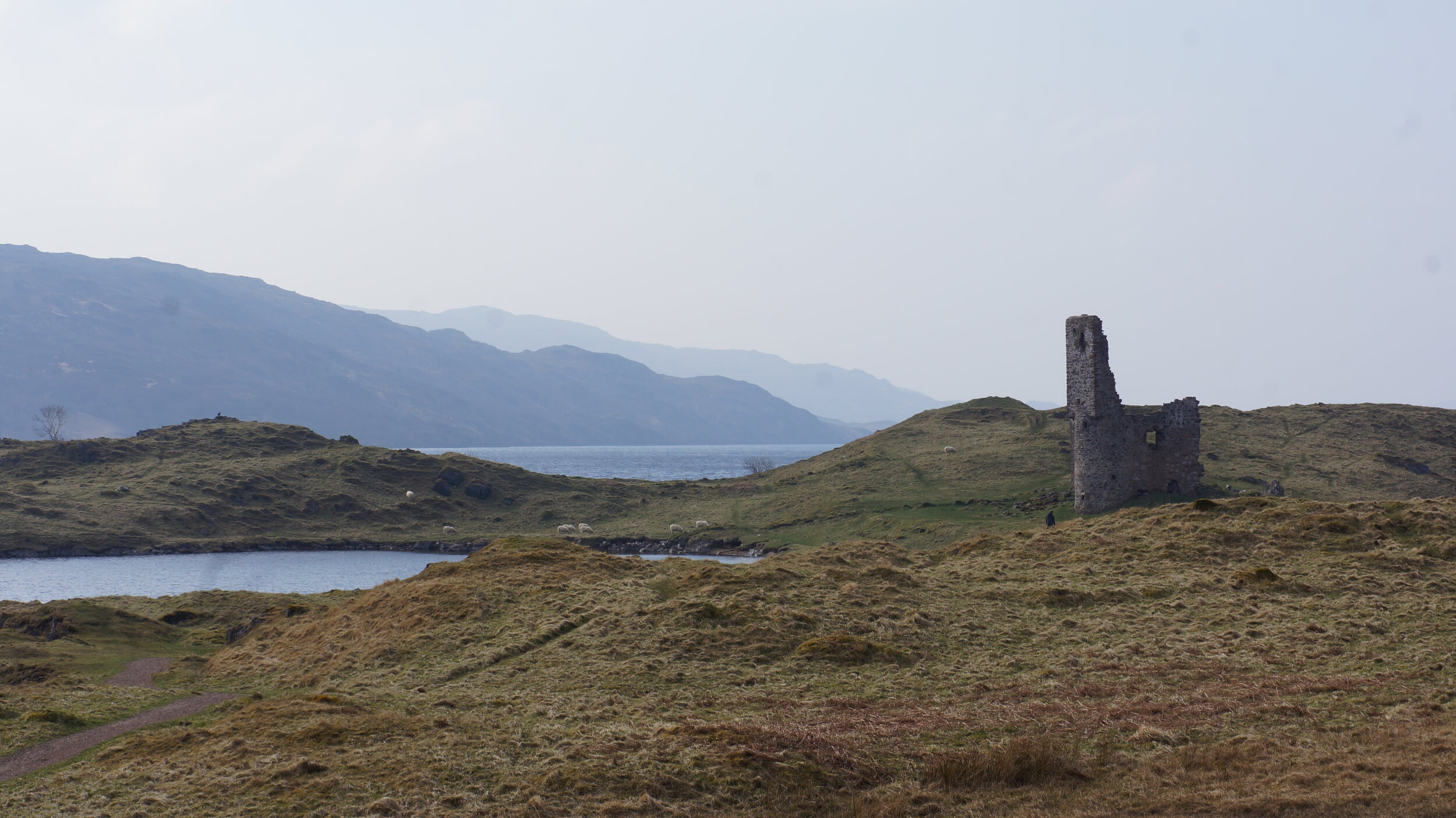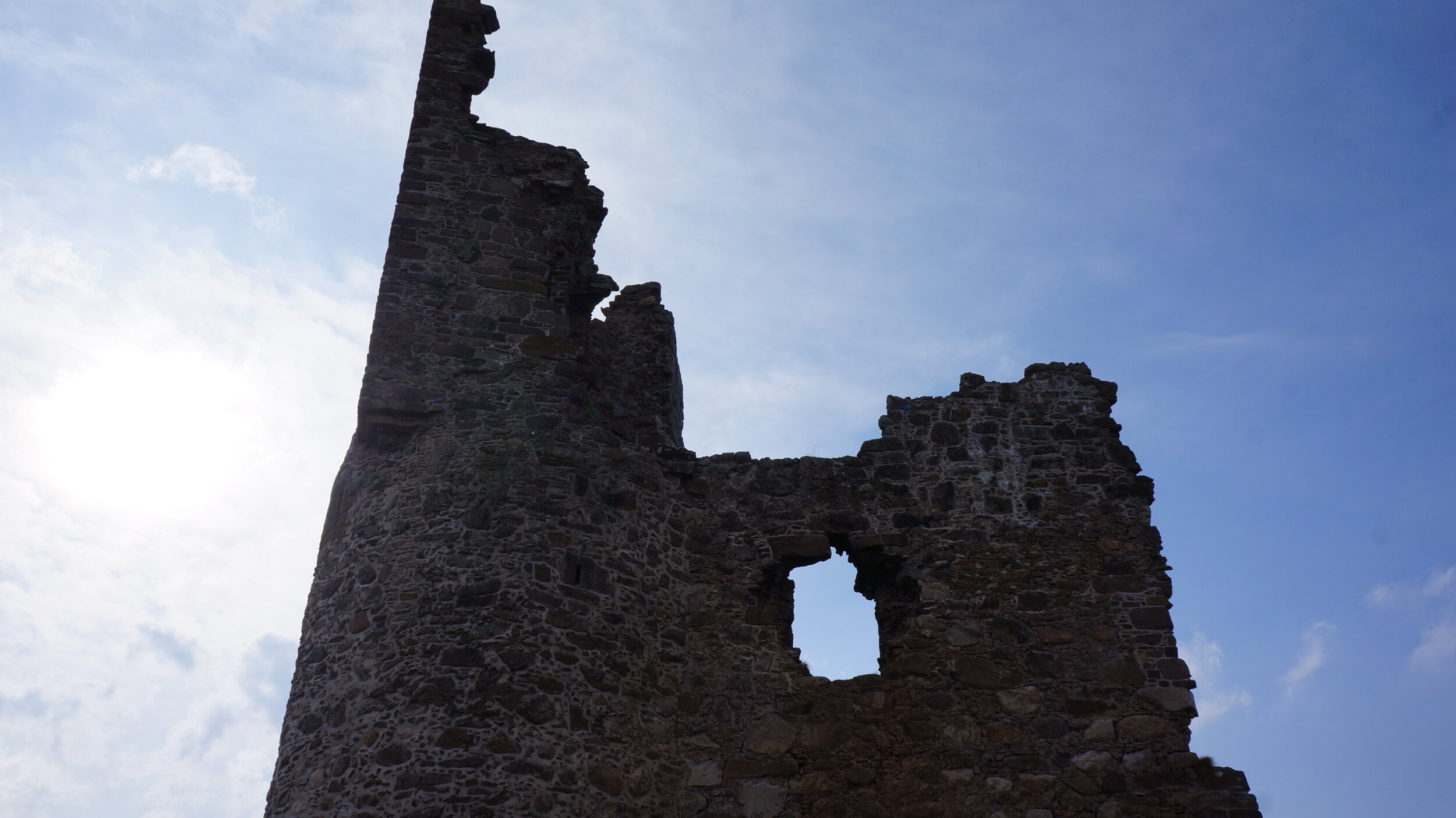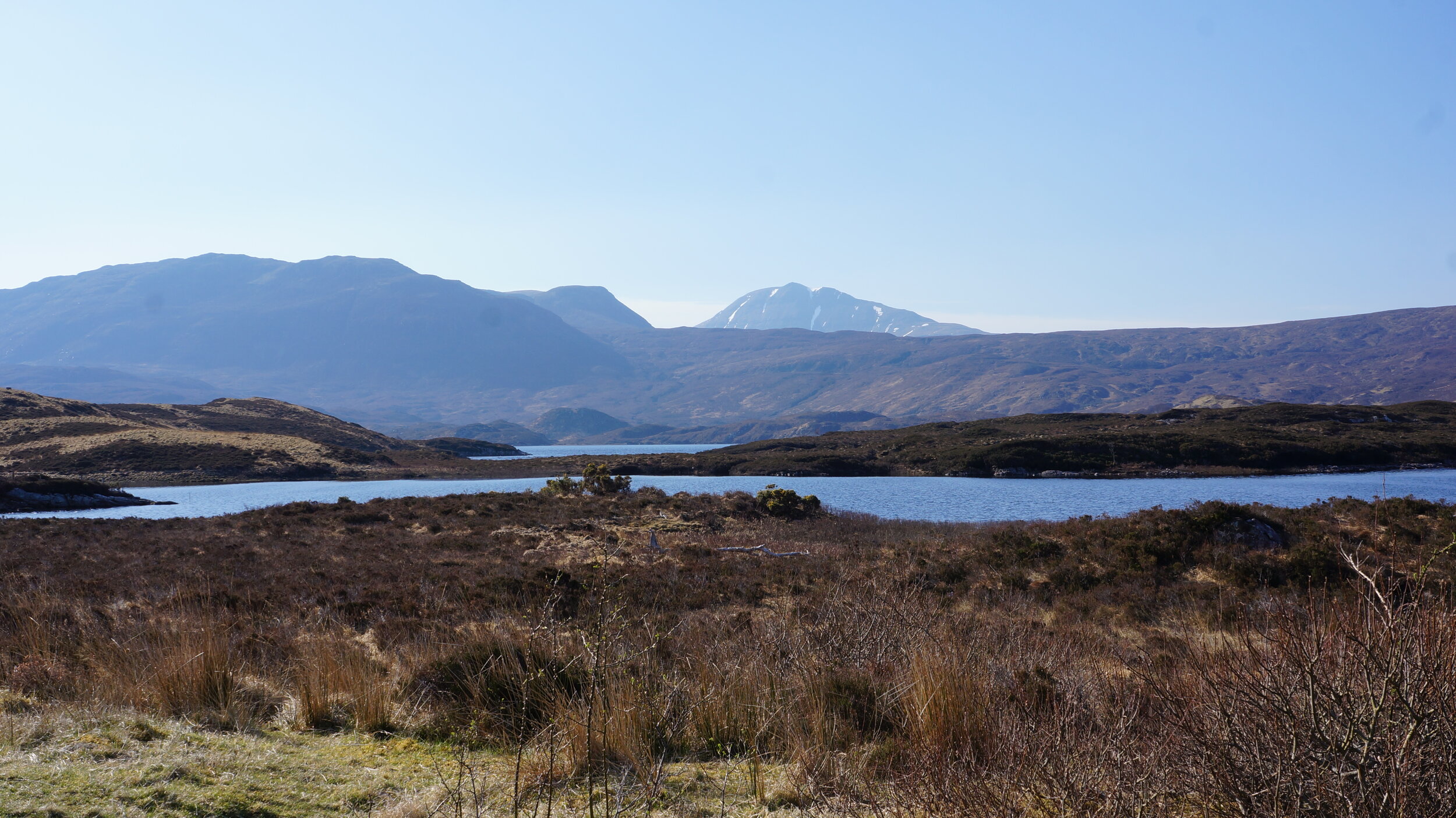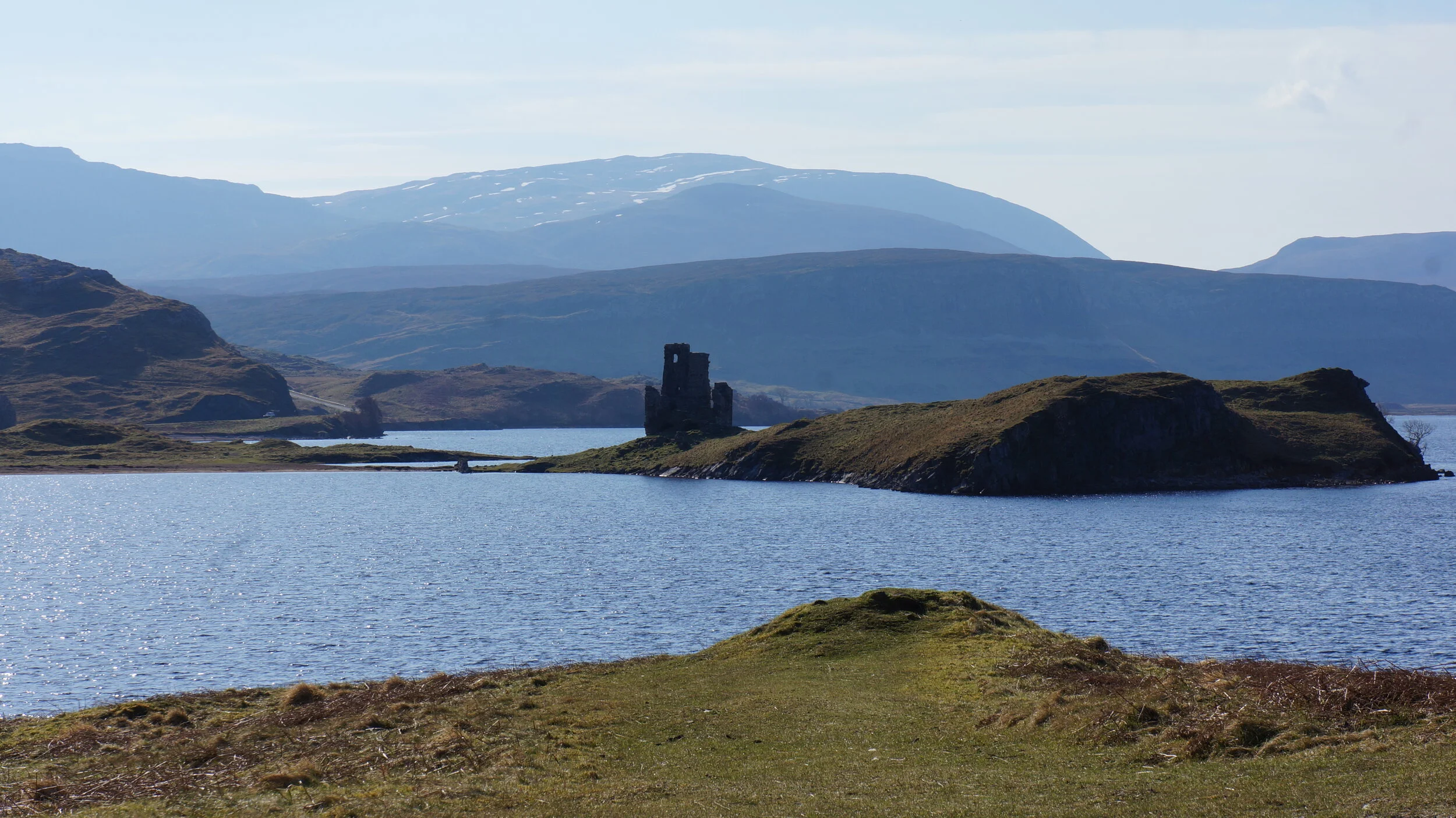Settings Tour - Assynt
/In our last post, we followed our fiction team of folklorists through the Highlands and Islands. This time we’re going to take a deep dive into the Once & Future Series sites in Assynt. Come with me as we explore this beautiful part of Scotland in poetry, film, and photos. Assynt is where Sarah gets to meet her people and learns more about what happened to her mother. It’s also where the proverbial excrement hits the fan on keeping her relationship with James Stuart private.
Why Assynt? Why couldn’t the People of the Footprint live in Orkney or Skye, or somewhere else that folks might be more familiar with? It’s the fact that until the North Coast 500 became a thing, Assynt was mainly a spot for hillwalkers and fishermen. The Children of the Footprint couldn’t have stayed hidden for very long near popular tourist sites. Another reason why I chose Assynt for the location of Sarah’s people is the Bone Caves which we’ll get to shortly. And finally, the legend of the Mermaid of Loch Assynt dovetailed so nicely with the story in the song “The River Maiden” that I had to pick this area.
This part of Scotland, like much of the Highlands, is dominated by two forces; geology and the sea. The Moine Thrust pushes the mountains skyward creating dramatic peaks and deep ravines where two tectonic plates meet. The geological formation is so clearly visible in Assynt that it gave one geologist nightmares about being ground in between the shifting plates. While the mountains dominate the land, the sea carves a dramatic coastline of deep sea lochs, gorgeous beaches with crystal clear water, and rock formations like sea stacks.
I couldn’t describe this area in better words than Scottish poet, Norman McCaig. Here is an excerpt from his poem “A Man in Assynt”
A Man in Assynt - Norman McCaig
Glaciers, grinding West, gouged out
these valleys, rasping the brown sandstone,
and left, on the hard rock below –
the ruffled foreland –
this frieze of mountains, filed
on the blue air –
Stac Polly,
Cul Beag, Cul Mor, Suilven,
Canisp –
a frieze and
a litany.
Who owns this landscape?
Has owning anything to do with love?
For it and I have a love-affair, so nearly human
we even have quarrels. –
When I intrude too confidently
it rebuffs me with a wind like a hand
or puts in my way
a quaking bog or loch
where no loch should be. Or I turn stonily
away, refusing to notice
the rouged rocks, the mascara
under a dripping ledge, even
the tossed, the stony limbs waiting.
More of this beautiful poem at the Scottish Poetry Library.
Let’s start out with some real-world places that you can visit if you ever find yourself in the northwest of Scotland.
Lochinver (Loch an Inbhir)
The village borders the sea loch at the mouth of the River Inver which flows from Loch Assynt to the sea. It’s the second-largest fishing port in Scotland and is also popular among hobby fishermen. There are many hiking trails in the area nearby, and Suilven, the mountain that overlooks the village is popular with mountain climbers. Lochinver is also near other attractions such as Ardvreck Castle, Achmelvich Beach, and Clachtoll Broch.
The view from Tigh na sith Guesthouse.
In the Once & Future series, Lochinver is the team’s base of operations in Thrice to Thine when Sarah goes to visit her great aunt Eilidh MacLeod. The team visits the Youth Hostel, the Village Hall, and a waterfront pub. All of these buildings can be found in Lochinver, although the pub where I met the man who inspired the older incarnation of Rab Ballantyne is now closed. Lochinver is definitely worth a visit.
You can see more of Lochinver and the area around it in the charming and uplifting film Edie. It’s about a widow who decides to climb Suilven against the advice of almost everyone.
Ardvreck Castle (Caisteal Aird Bhreac)
Between Inchnadamph and Lochinver on the A837 is one of Scotland’s most picturesque castle ruins. Ardvreck Castle sits on a spit of land that juts into Loch Assynt. The 15th century castle commands a strategic view of the land and loch surrounding it. It was built by the MacLeod’s around 1490, and is the setting of a tragic legend about the daughter of the MacLeod chief. The legend goes that the MacLeod was impatient to finish building the castle and made a deal with the devil. In exchange for helping them complete the castle, the MacLeod promised his daughter’s hand in marriage to Satan himself. But when the time came, his daughter Eimhir couldn’t bear the prospect of marrying the devil. She jumped from the castle’s tower into the loch. Instead of drowning, she turned into a mermaid and lived on in the loch, and in the underwater caves in the area.
This legend becomes important in the Once & Future series. The rise and fall of the water in the caves is essential for the matching ceremony in Nothing Good Gets Away. The castle is also an important site in Cauldron as Sarah’s mother, Molly and Rab Ballantyne meet up to escape the pressures of Làrachd an Fhamhair.
You can read a more detailed history of the castle here.
Inchnadamph (Innis na Damh)
Inchnadamph is the small village at the southeastern end of Loch Assynt where the Inchnadamph River spills into the loch. It consists of several houses, a couple of hotels, and a historic kirk on the shore of the loch. The Gaelic name, Innis na Damh means “meadow of the stags”. The meadow uphill from the village is well known for its popularity as a grazing spot for deer. I can attest that while hiking through the area, we saw no less than four. Inchnadamph is also known as a great place to view the Moine Thrust, a meeting of tectonic plates that causes one plate to be pushed upward by the other. It runs from the Northwest Highlands to the Isle of Skye and has an interesting tie-in with the legend of the mermaid. You can read about it in my post “The Mermaid and the Moine Thrust”.
red deer uphill from Inchnadamph
Inchnadamph Bone Caves
Inchnadamph is also the closest village to the Bone Caves. In the 1990’s people exploring the caves in the mountains around Inchnadamph found caves full of a variety of bones of animals and humans dating back to the 3rd millennium BCE. These are some of the oldest and the widest variety of bones found in Scotland. Hikers can go to the caves via a trail that starts at the car park in Inchnadamph, but the trail can get steep.
The age of the bones found in the caves is one of the reasons I decided that Assynt would be an ideal location for an ancient tribe of people to hide from modern society. The Children of the Footprint who live in Làrachd an Fhamhair could have been there as long as those bones were in that cave. The extensive cave systems in the area are also the inspiration for the caves that Sarah, Dermot and Ruaraidh use to escape in Thrice to Thine.
Those are the real-life places in Assynt that appear in the Once & Future Series. Now, let’s talk about a couple of fictional places.
Làrachd an Fhamhair (Giant’s Footprint)
The hidden village where Sarah’s people lived for thousands of years is in an uninhabited glen in the mountains to the east of Inchnadamph. As described in Cauldron, the village is built on the sides of a stream or burn. It’s houses are made of stone and are built into the sides of the mountains with turf roofs. This is what enabled them to stay hidden for so long. Even from the air, it wouldn’t be noticeable. While Làrachd an Fhamhair is entirely fictional, it follows a tradition of hidden, cursed, or disappearing villages in Scotland most familiar to readers in the guise of Brigadoon.
Taigh na Damh (House of the Stags)
Taigh na Damh is the country estate of Lyall Green that we visit in Nothing Good Gets Away. Although the house looks like a castle, Green had it built after the collapse of Làrachd an Fhamhair in the late 1960’s. Here is a tour of a modern built castle replica that can give you an idea of what the inside of Taigh na Damh looks like. Green also makes use of some adjoining caves for the storage of his extensive collection of artifacts including the cauldron.
Next time, we’ll take a tour of Sarah’s favorite haunts in Chapel Hill, North Carolina. In the meantime, here are some more of my husband’s photos from our trip to Assynt.
